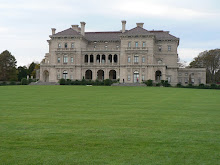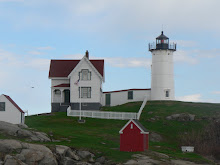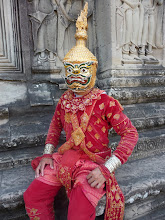
After leaving The Netherlands, we raced across the top of Germany to Berlin on the Autobahn. I was driving about 85 miles an hour, about as fast as I would ever go in America. However, it was as if we were standing still on the freeway, with Italian and German sports cars whizzing past at unbelievable speeds. It was late at night and the stretch was straight, perhaps leading to the high speeds. This was our most exciting ride on the Autobahn with the most extreme speeds.
In Berlin, Katie Broecker joined us again. She had a couple of weeks between the time she finished her study abroad in Ireland and the time she met her father in Tel Aviv, so she asked if she could tag along with us. How fortunate we were to have her!

Berlin was perhaps our most interesting stop on our European Tour. How could it not be, having served as the capital of the Prussian Empire, the capital of the Weimar Republic, the capital and center of Hitler's Third Reich, the epicenter of East Germany with the Berlin Wall diving the Communist world from the free world and the site of the fall of communism. I had prepared the children well for this section of our travels with books, movies and discussions about the events that occurred here. Unfortunately I spent almost a full day of our scheduled time at the hospital with Mia, so we really had to be on the run. Our first day in Berlin was spent partially at the DDR Museum, where it is advertised that one can safely experience life under communism rule! We spent a couple of hours in the driver's seat of a Tribent car, reading about goods such as Levis that were coveted in East Germany, hanging out in a recreated apartment that a typical family would have been assigned and learning about the events and lifestyle of the DDR. The museum was exactly what we needed for our introduction to Berlin. In addition to our education at the DDR Museum, I also had a memorable conversation with a taxi driver who had lived in Berlin since he was a child. I asked him if there was any difference now between the East Germans who lived under communism and the West Germans. He said that the East Germans are still a little odd. He said that for so long they were told what to do, how to do it and who they could become, that now, they are not as ambitious and willing to take care of themselves and make their own decisions. Of course this is a stereotypical statement and just one man's opinion, but I found him fascinating to talk to.


We spent quite a bit of time learning about the Berlin Wall. We explored the Berlin Wall in three different spots. Our first stop was at the Topography of Terror, which is where the longest section of the outer wall can be found. In an outdoor exhibit, a timeline with events, stories, articles and photographs outlines the history of how the Nazis came into power and the aftermath which led to the Berlin Wall and Communism in East Germany. We slowly wandered down the exhibit, intrigues but saddened by the history of this wounded city.
Our next stop was the West Side Gallery, where the longest section of the inner wall remains. Artists from around the world have painted the wall, with many depicting images of freedom.
Our last exploration of the wall was at the Berlin Wall Memorial. Sixty meters of the former "no man's land" has been artistically preserved. A memorial to the victims who died while trying to escape East Germany stands in the center of the memorial. These men and women tried to jump to freedom out of apartment windows, with the hope of landing on the West side of the wall, they attempted to zip line across and tunnel below, to name just a few attempts.




We visited the Allied Museum that is located on the spot where the Allied Forces controlled their section of Berlin. As part of the museum, Checkpoint Charlie is recreated, representing the best known Berlin Wall crossing that separated East Berlin and West Berlin during the Cold War. It became a symbol for the Cold War and the separation of East and West. The museum documents the 50 year history of the Allied presence in Berlin. Exhibits depicting escape attempts by East Germans to West Germany were perhaps most interesting. Before we arrived in Berlin, the kids watched Night Watch, a Disney film from the early eighties about a family who makes a hot air balloon and flies over the Berlin Wall to freedom. An exhibit about this family was on display in the museum and the film was actually playing the the theater.
 |
| Look closely at the demonstration of a human hiding in the engine of the car in an attempt to drive across the boarder. |
 |
| This photo depicts a girl examining the original attempt to keep the East Germans in East Berlin. This original border went up over night as the government feared too many Germans would escape to the West. |
 |
| This painting depicts the celebration that took place in 1989 when the wall came down. |
We spent the rest of our time in Berlin at various monuments and historical buildings. We stopped at the Reichstag building that is Germany's seat of parliament. Unfortunately we didn't have tickets to climb up to the top of the glass dome, which is a highlight in Berlin, but we did arrive as crowds gathered to hear the French Prime Minister speak which made the building memorable.
We wandered through the Holocaust Memorial, which is a forest of 2711 slabs of concrete, each a different size and shape. The artist's attempt was to create a feeling of groundlessness and instability, a sense of disorientation. We thought that he was successful.
We walked through the Brandenburg Gate in the early evening, as rain added a glisten to the area. This gate is the only remaining gate to the original city wall and was built in 1778. The Berlin Wall ran along the Brandenburg Gate, so the gate came to symbolize the division of East and West Germany. In 1989, when the wall fell, Germans flocked to the newly opened Gate to celebrate new found freedom.
We walked past the Red City Hall or rathaus, which is the headquarters of Berlin's city government.
In Alexanderplatz, the center of former East Berlin, we observed the socialist architecture including the Fernsehturm or TV Tower. The TV Tower was the pride of the DDR with communist propaganda films shown inside to promote the quality of life in East Berlin.
Our last stop was the Tiergarten to see the Monument to Soviet Soldiers. It was constructed a few months after the capture of Berlin in 1945 to honor the Soviet Soldiers fighting the Nazis. Ten million Soviet Soldiers were killed in the war, by far the largest loss of any country. By comparison, the United States lost about 416,000 and Germany lost five million. During the Cold War, the monument lay in ruins, partially due to East Germans using the park and monument for fire wood to keep warm.
Obviously this city is full of history and culture. We simply did not have enough time to see everything that was even on our preliminary list. We look forward to being able to spend more time in Berlin in the future and, when we do, we will schedule a few more days.
























































1 comment:
Berlin is a city which you could explore for months. Of the many things you saw, Checkpoint Charlie and Brandenburg Gate are the only ones I have seen. I will definitely want to visit the new parliament building, the DDR Museum, and the various stretches of the Wall. I remember my dad talking about how moving it was for him to walk through Brandenburg Gate again after the Wall came down. He remembered walking through it during his mission in the early 1930s and then having it walled off for so many years.
Post a Comment